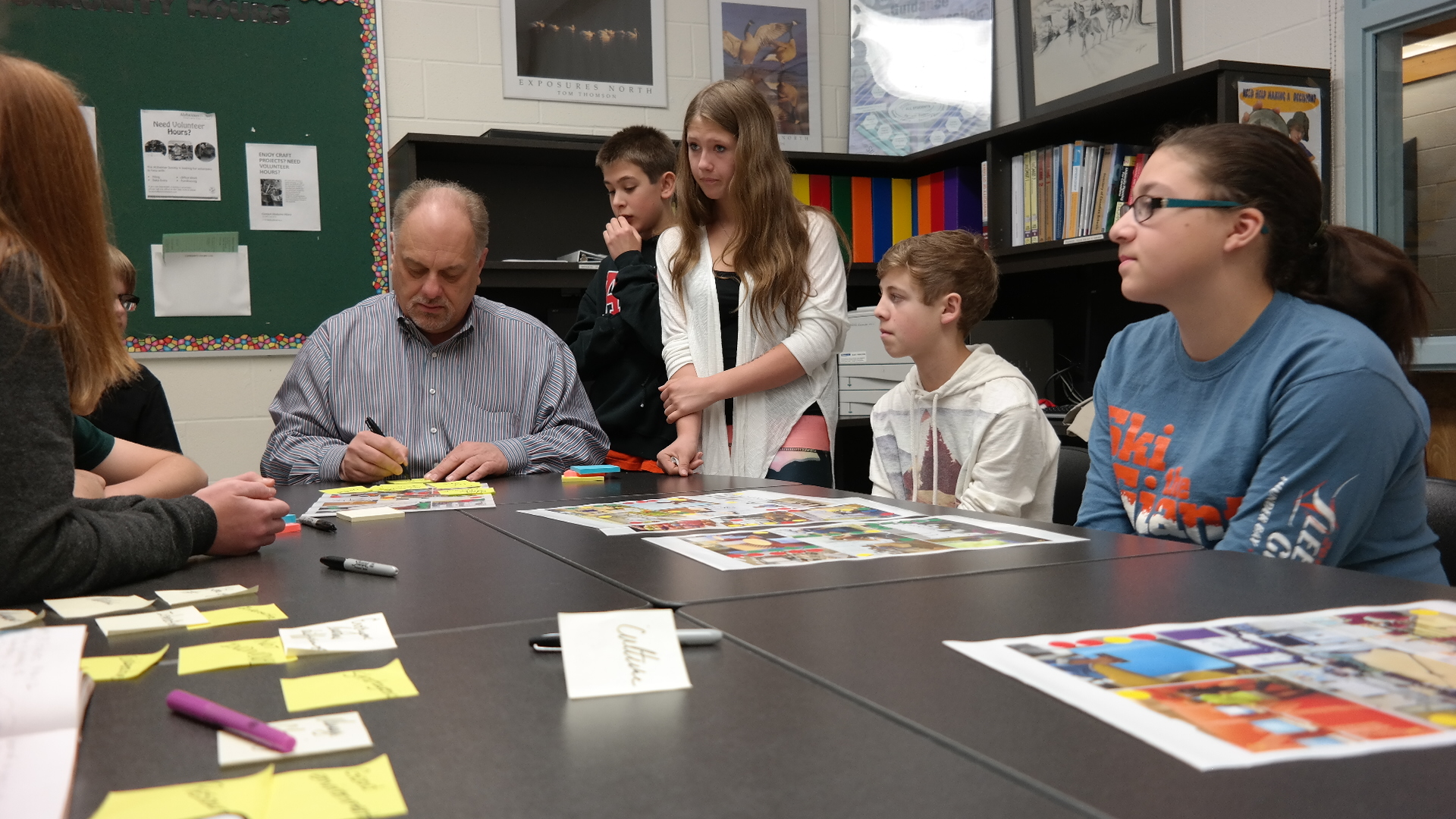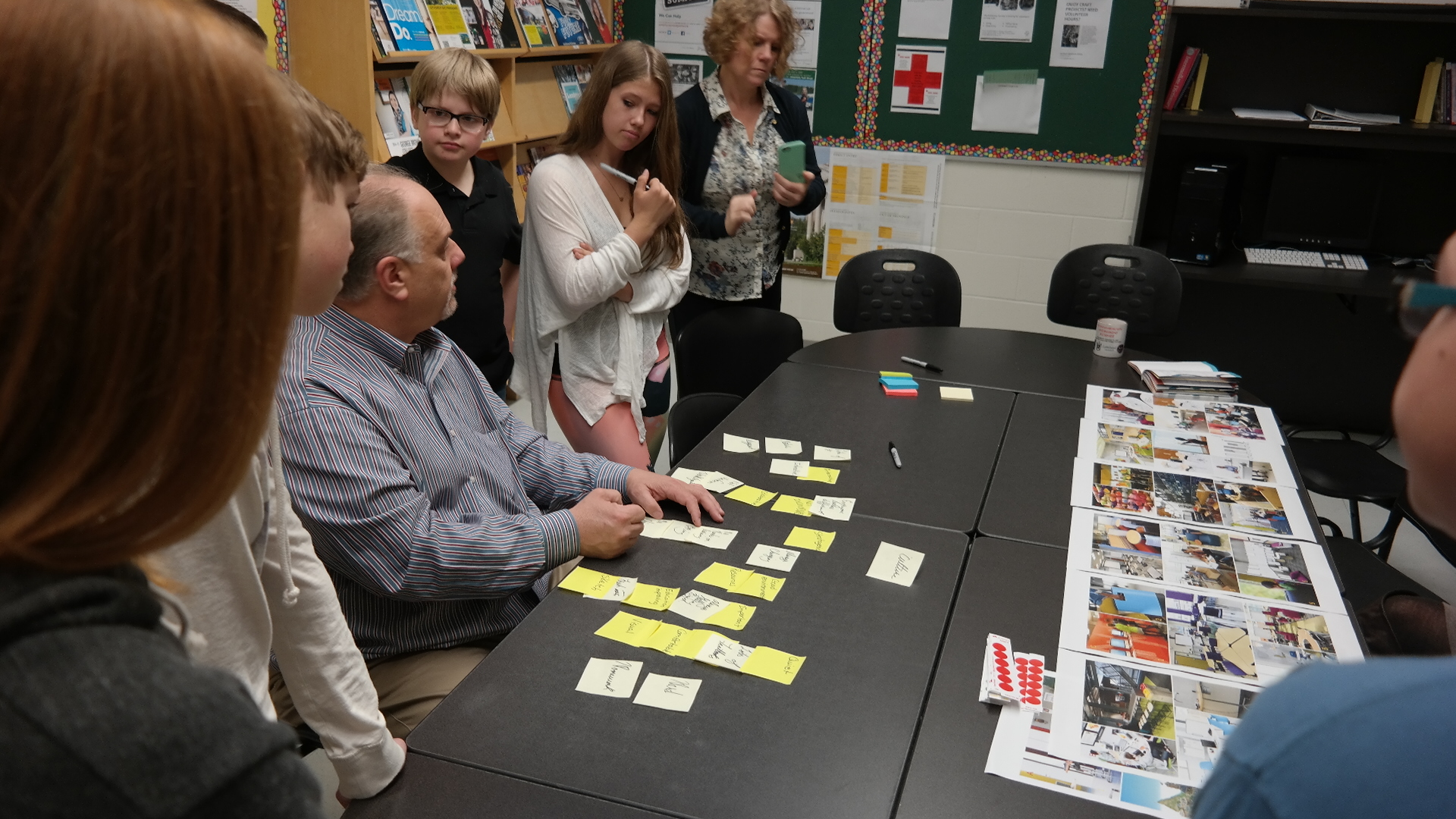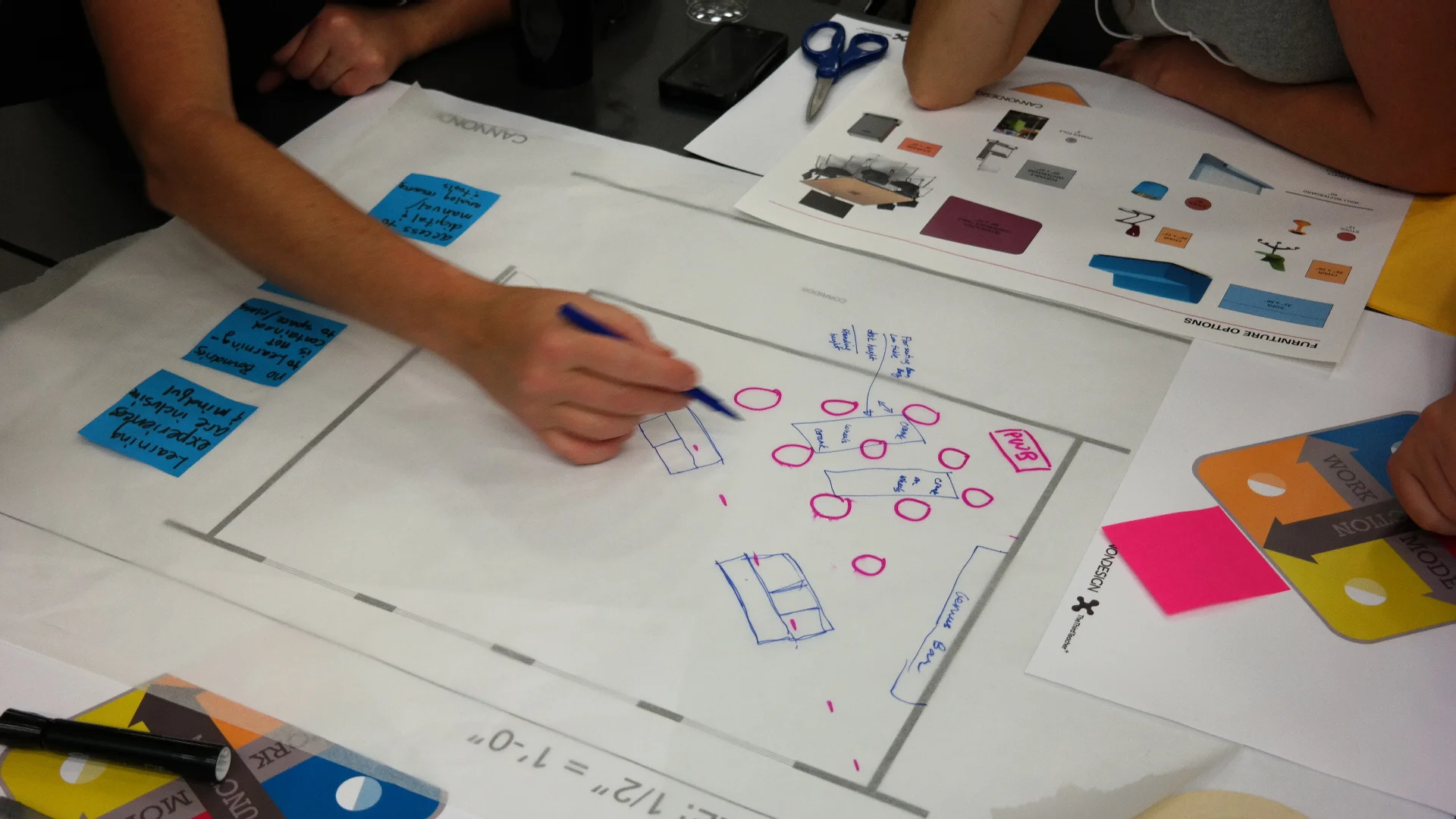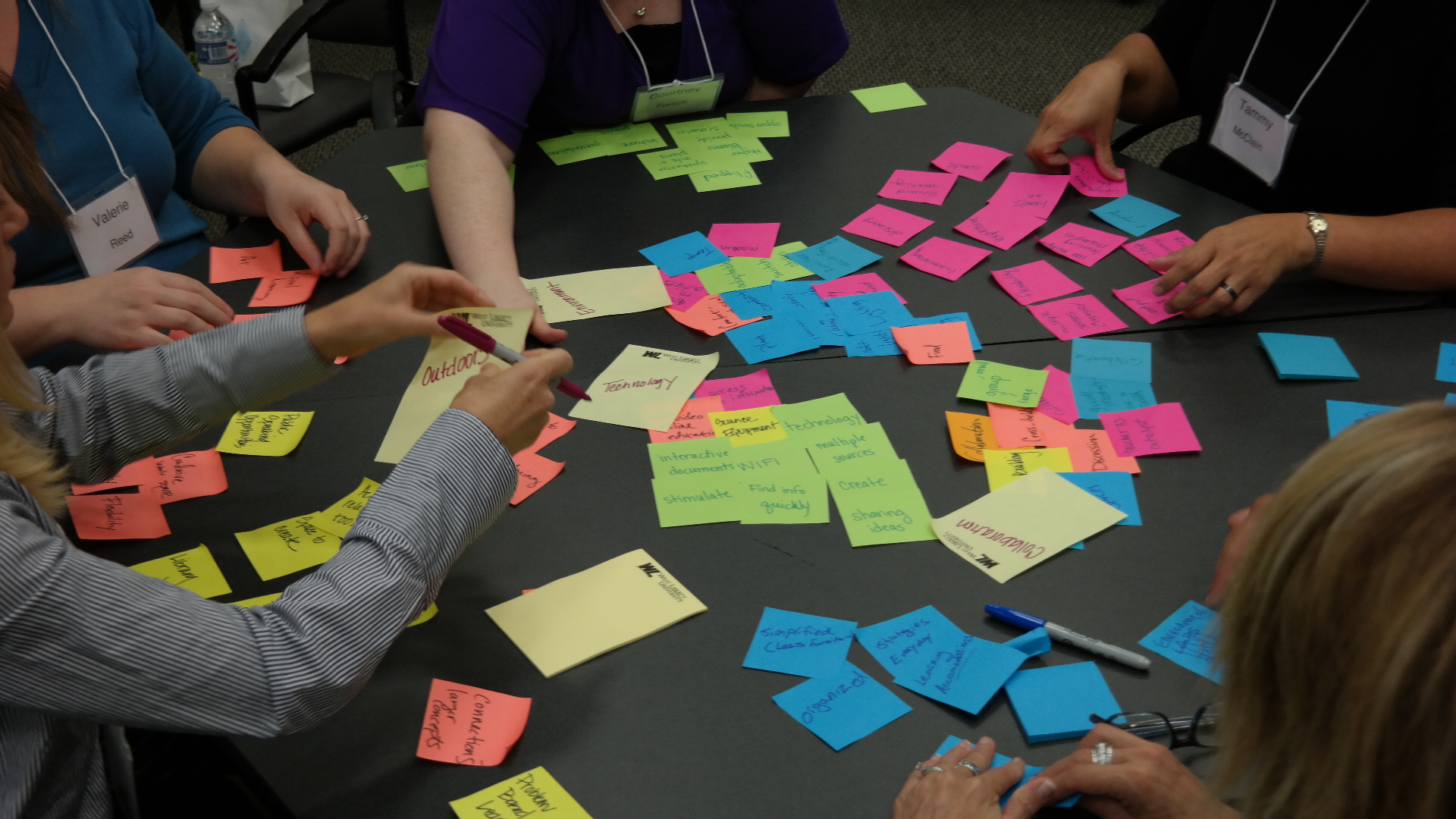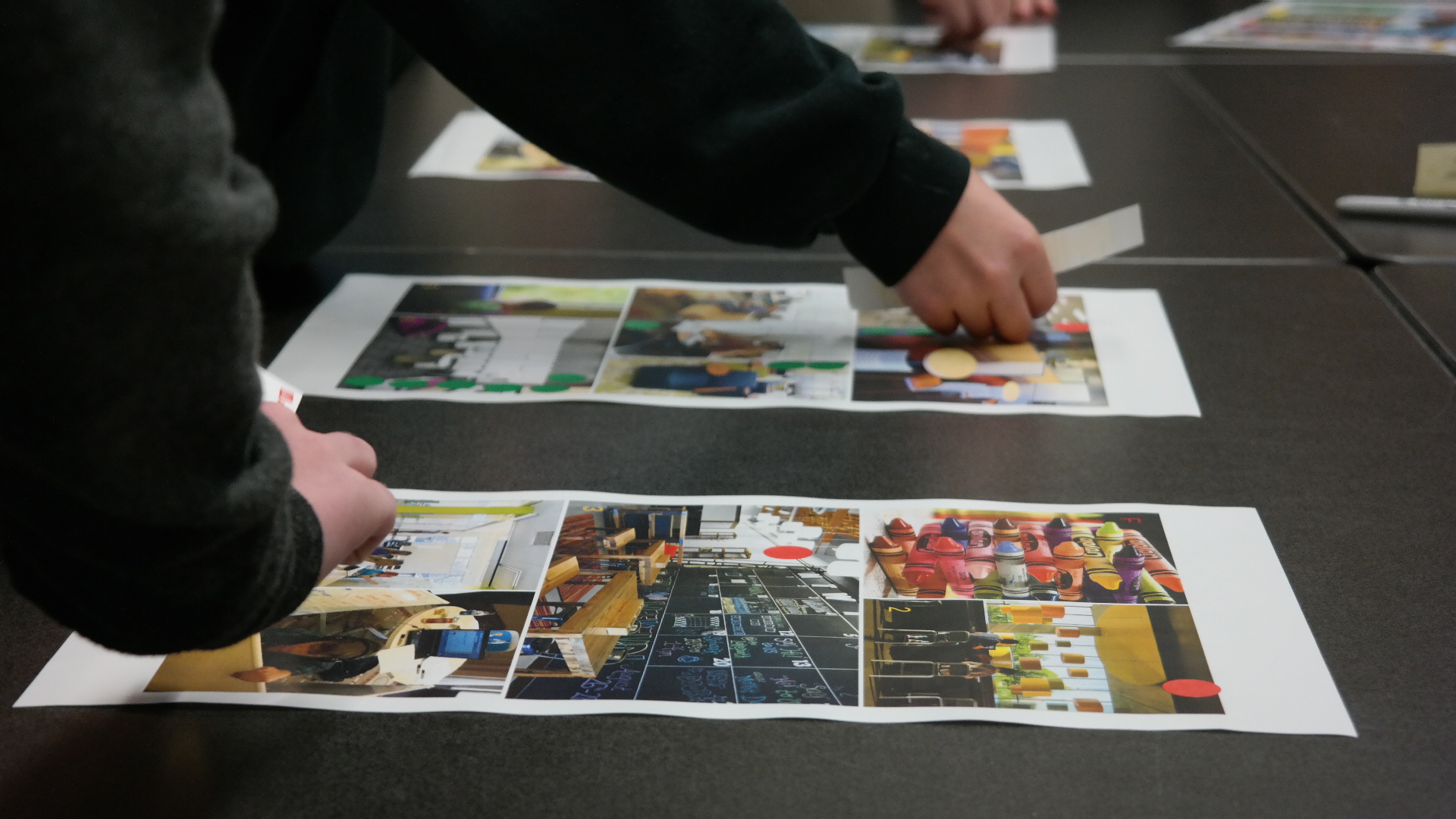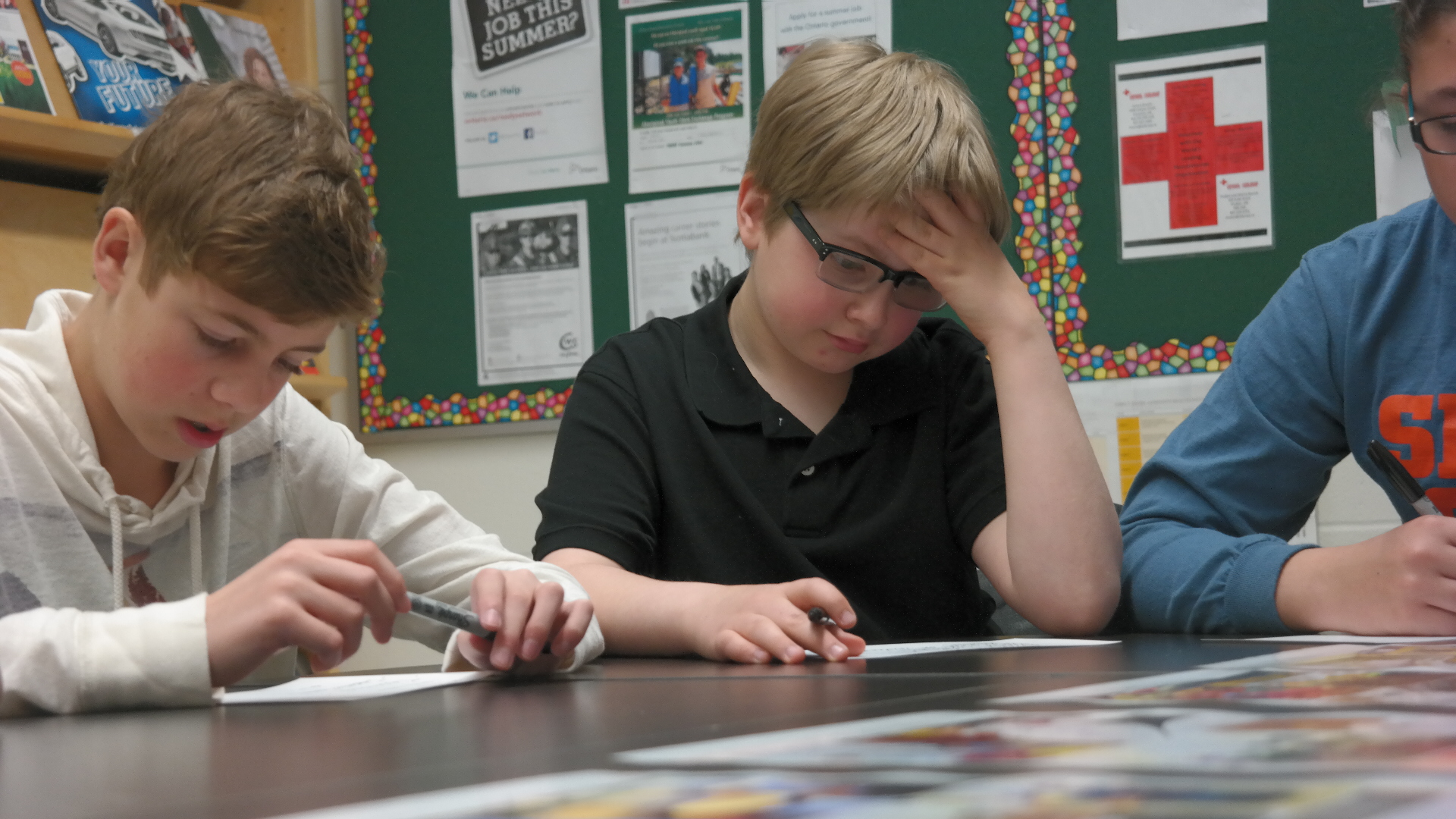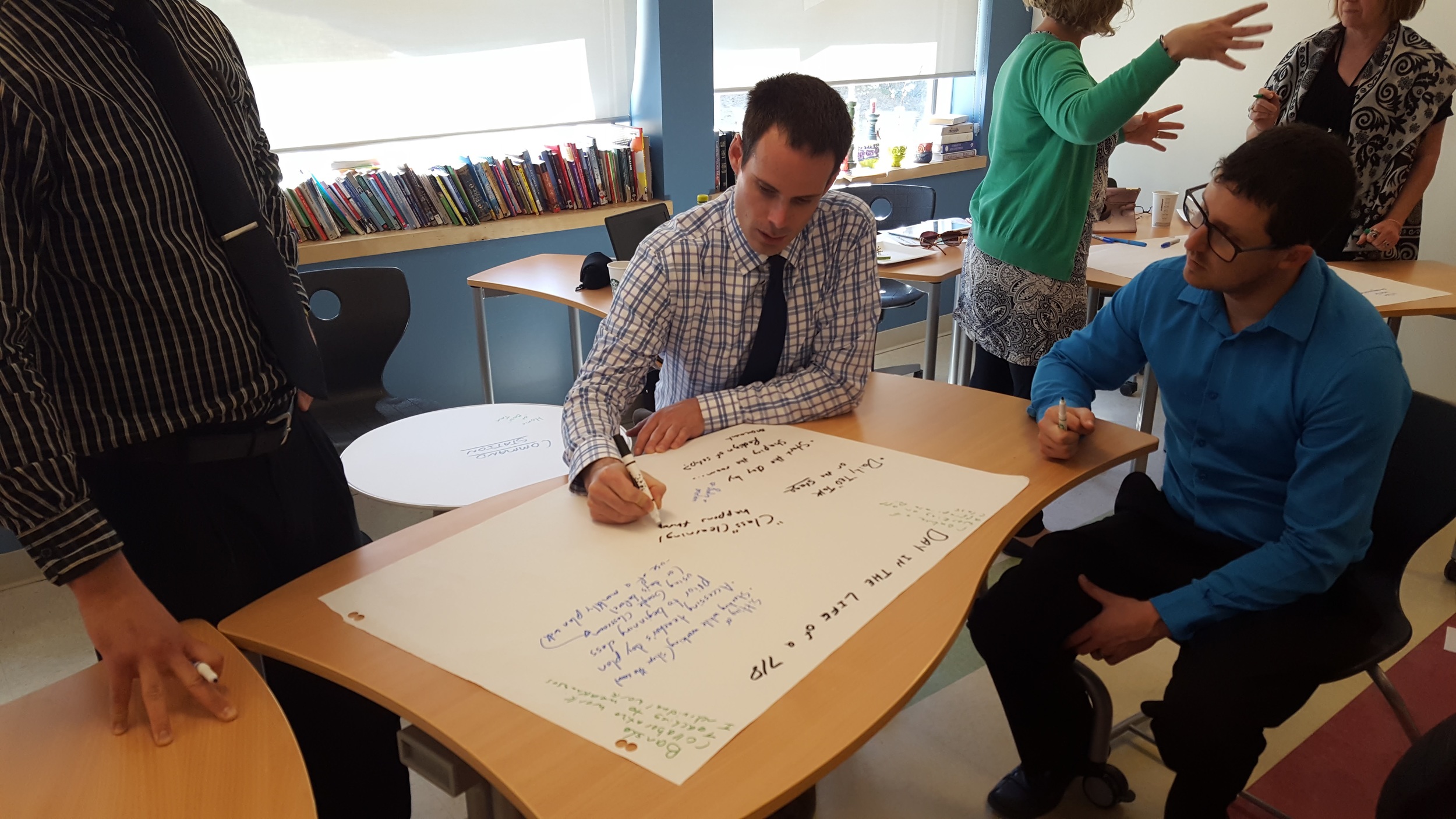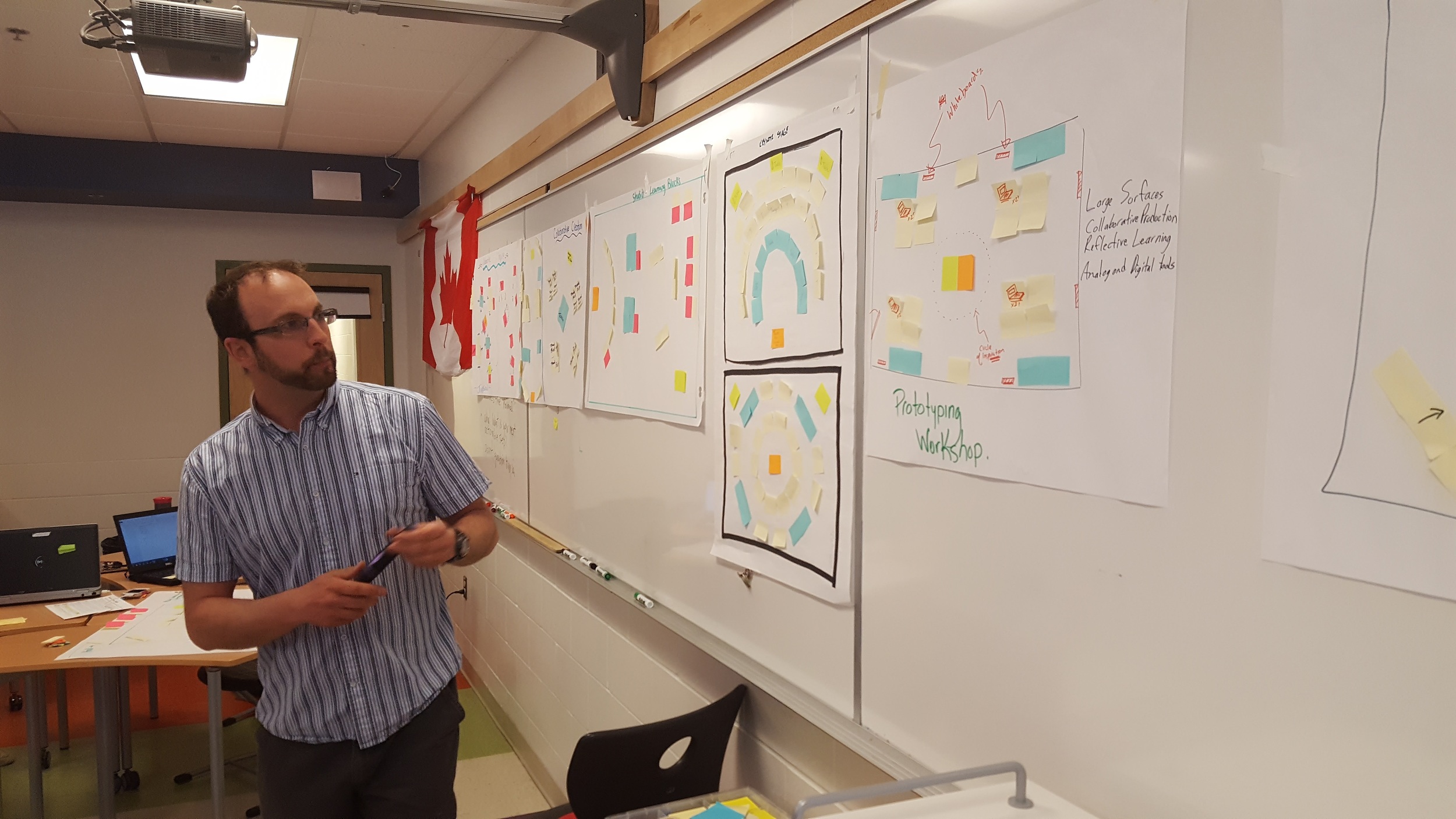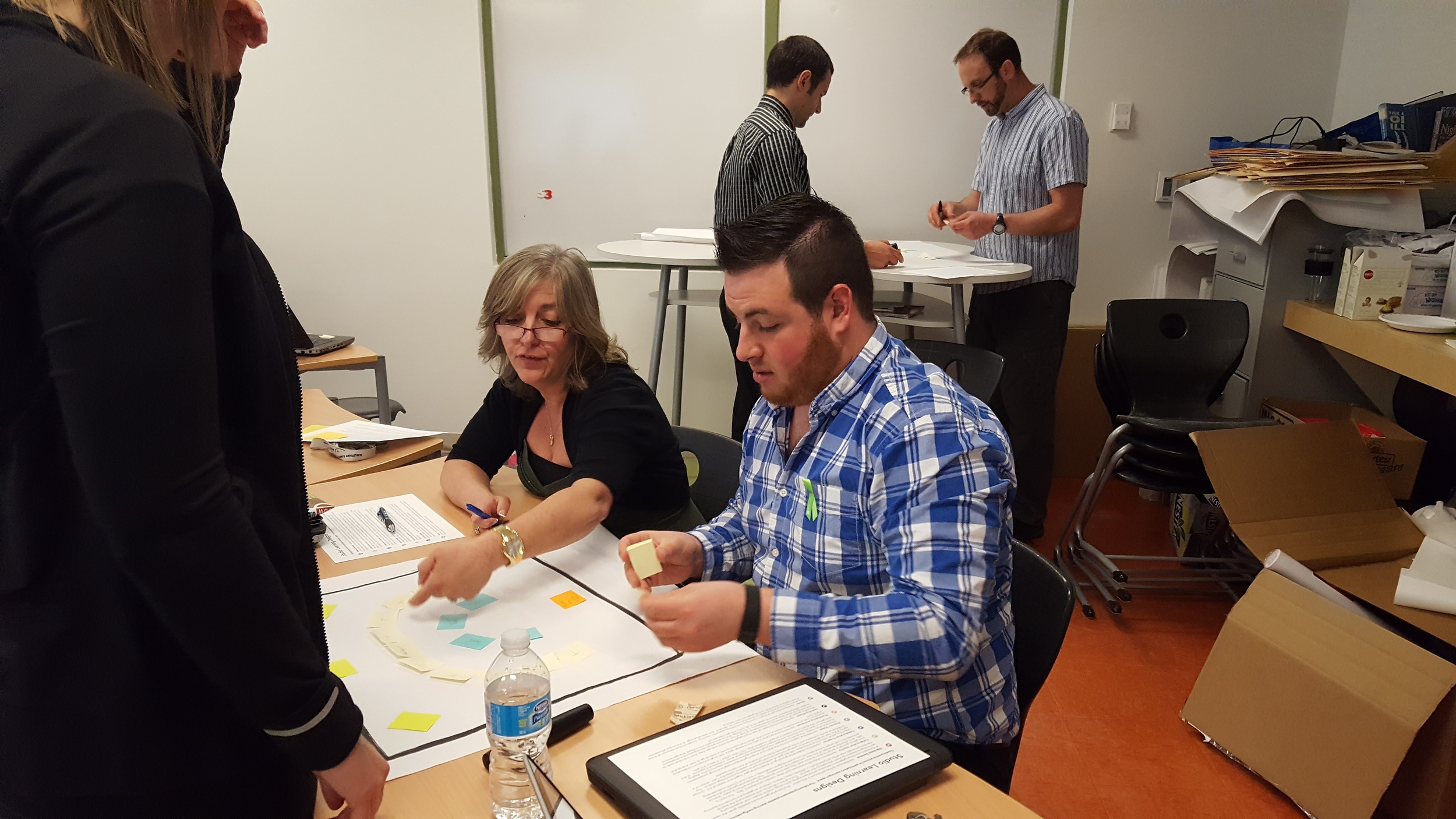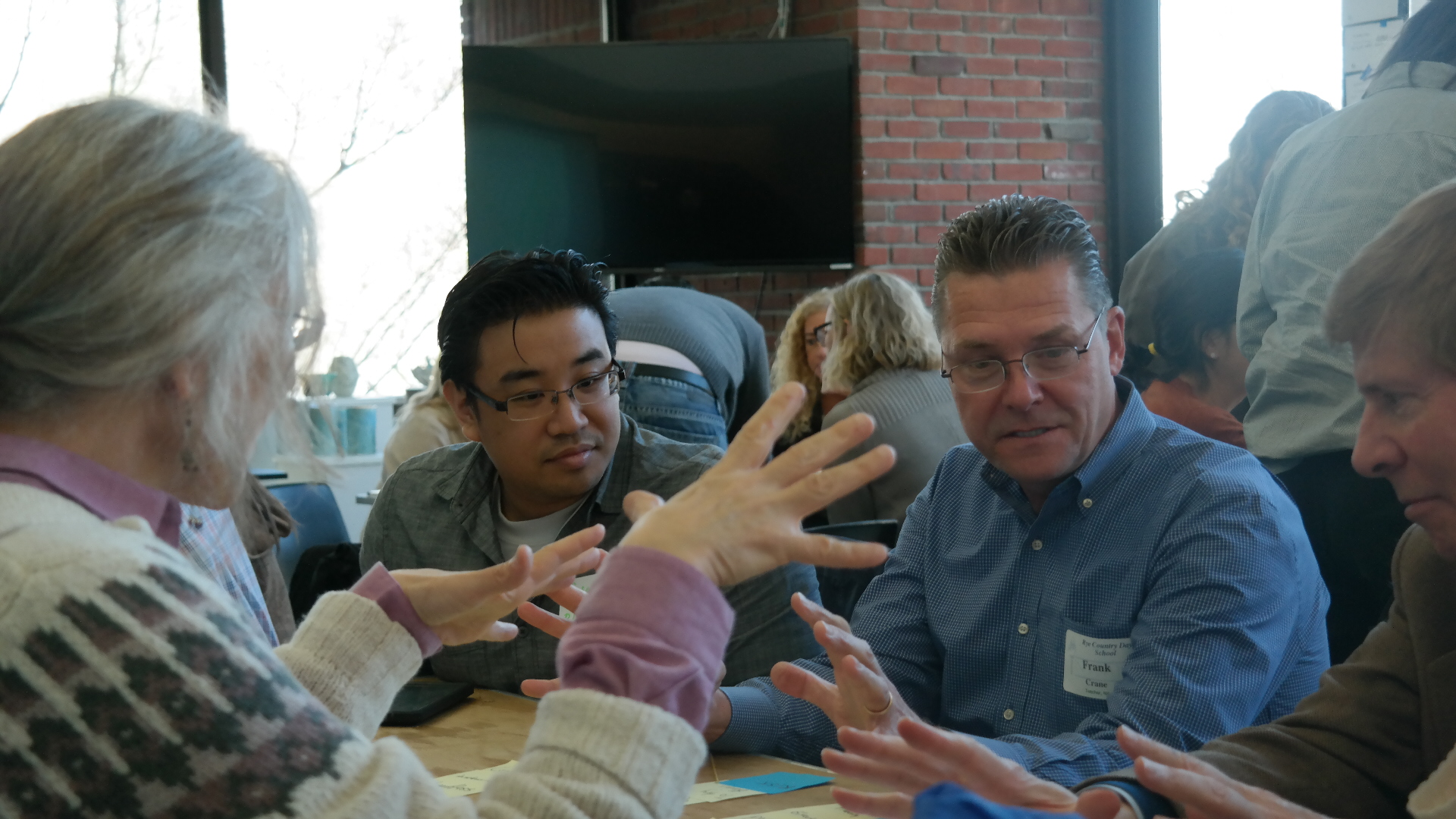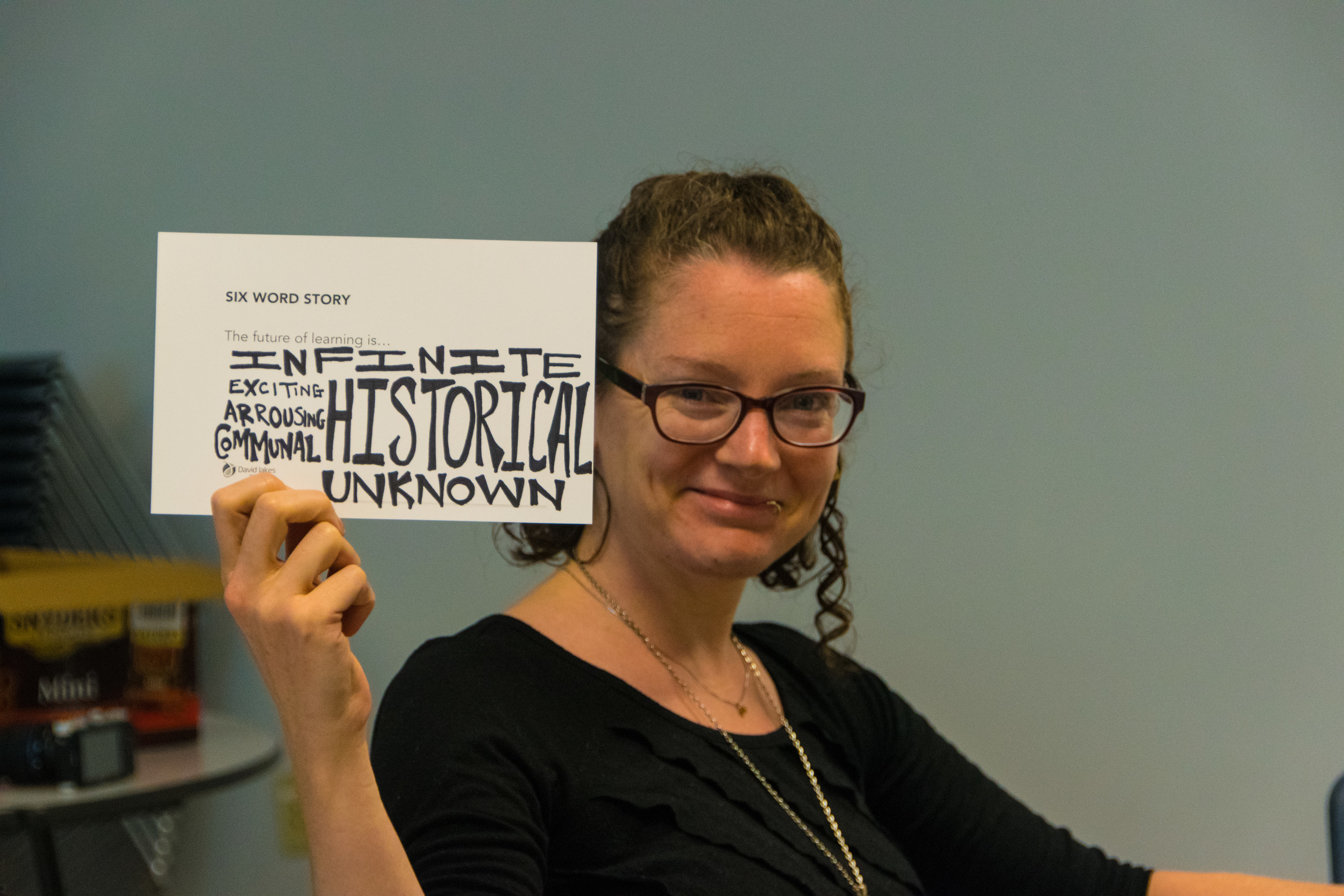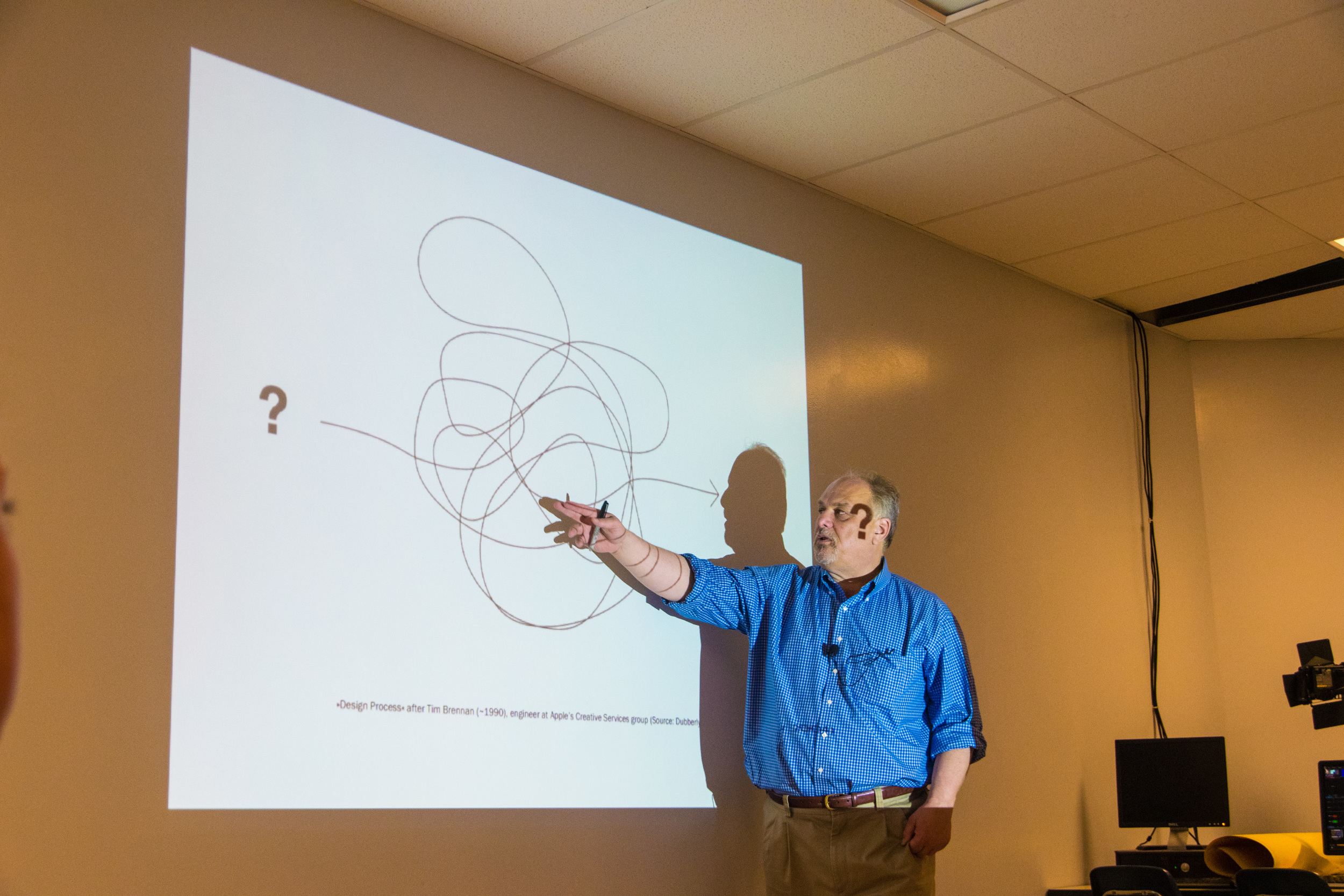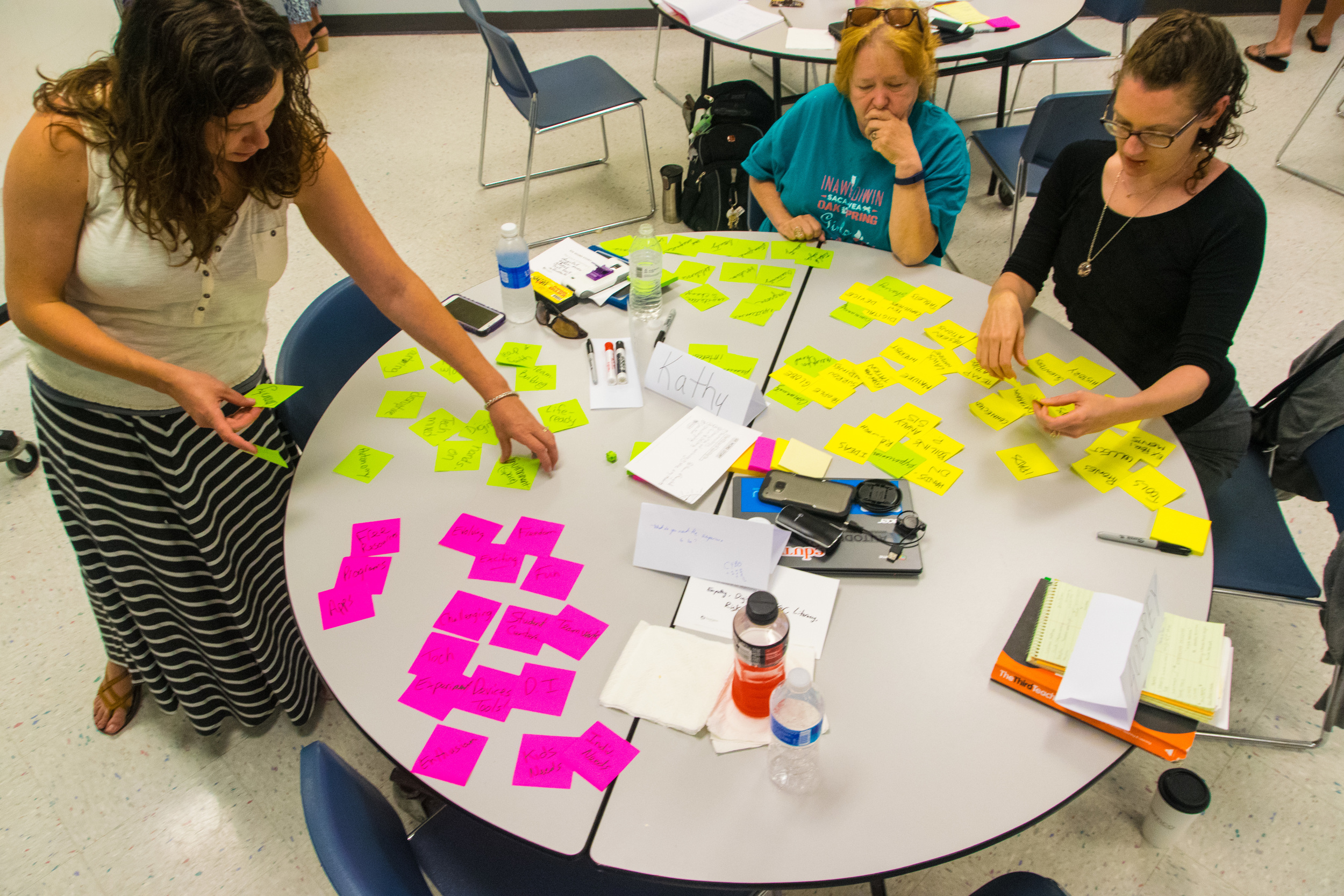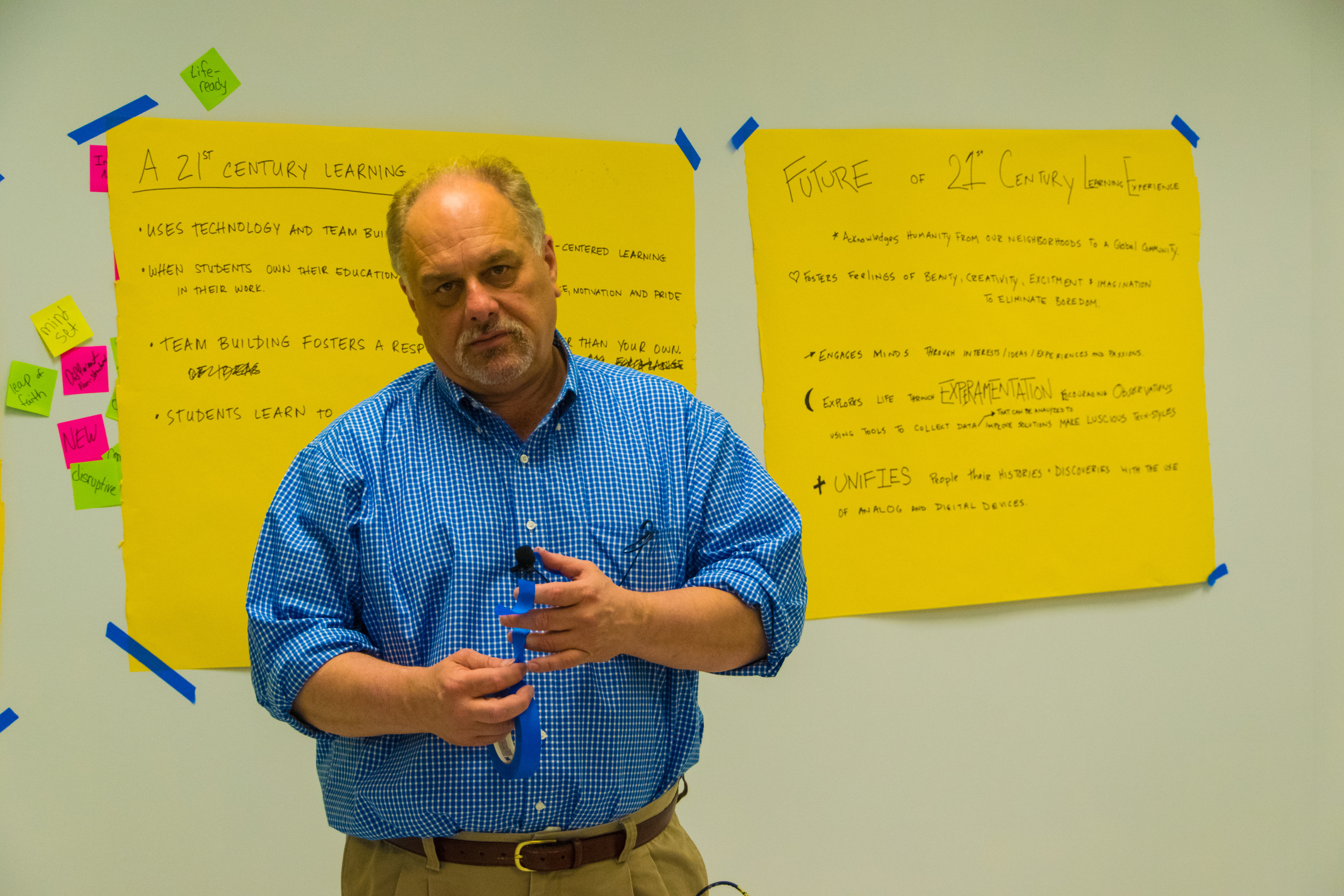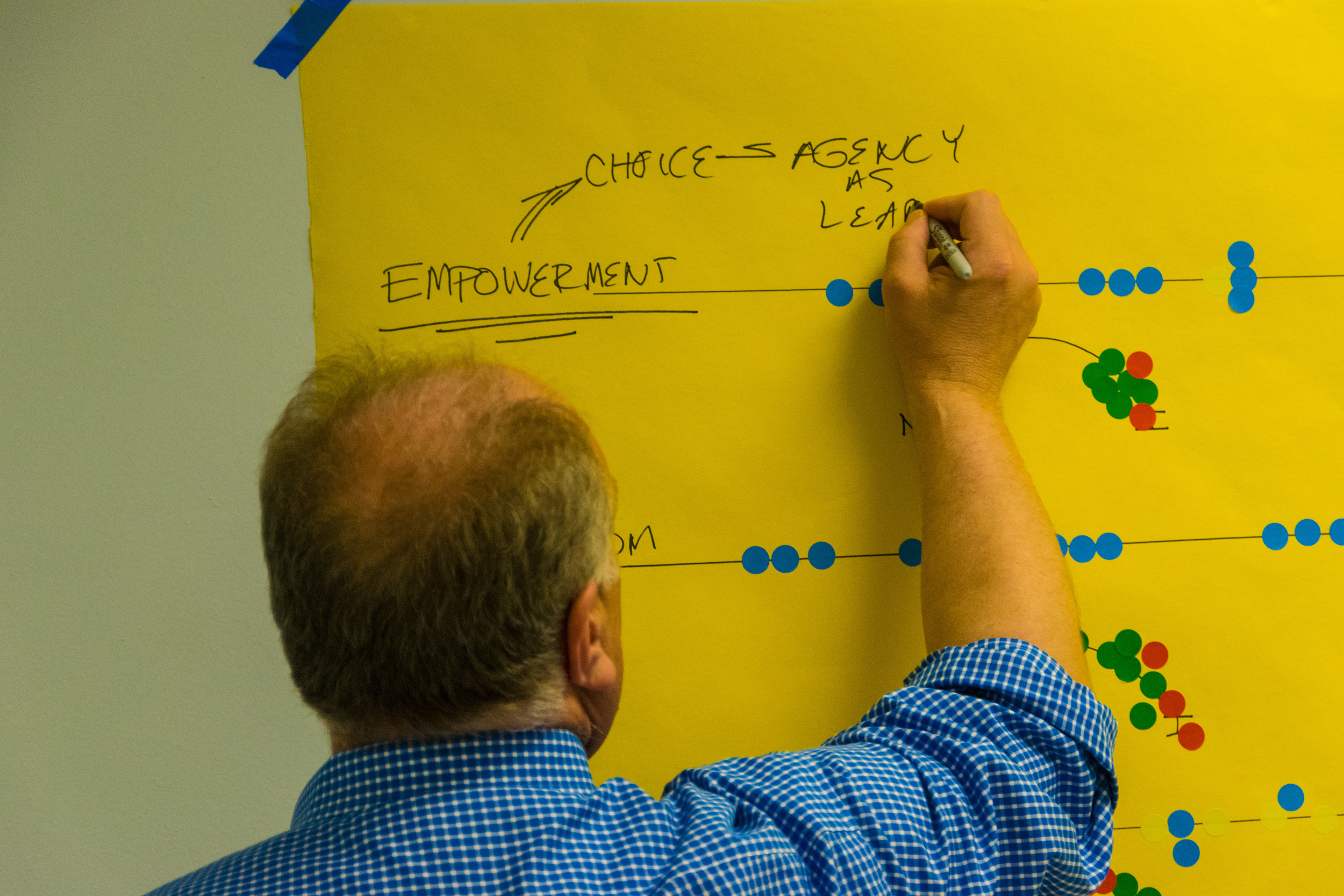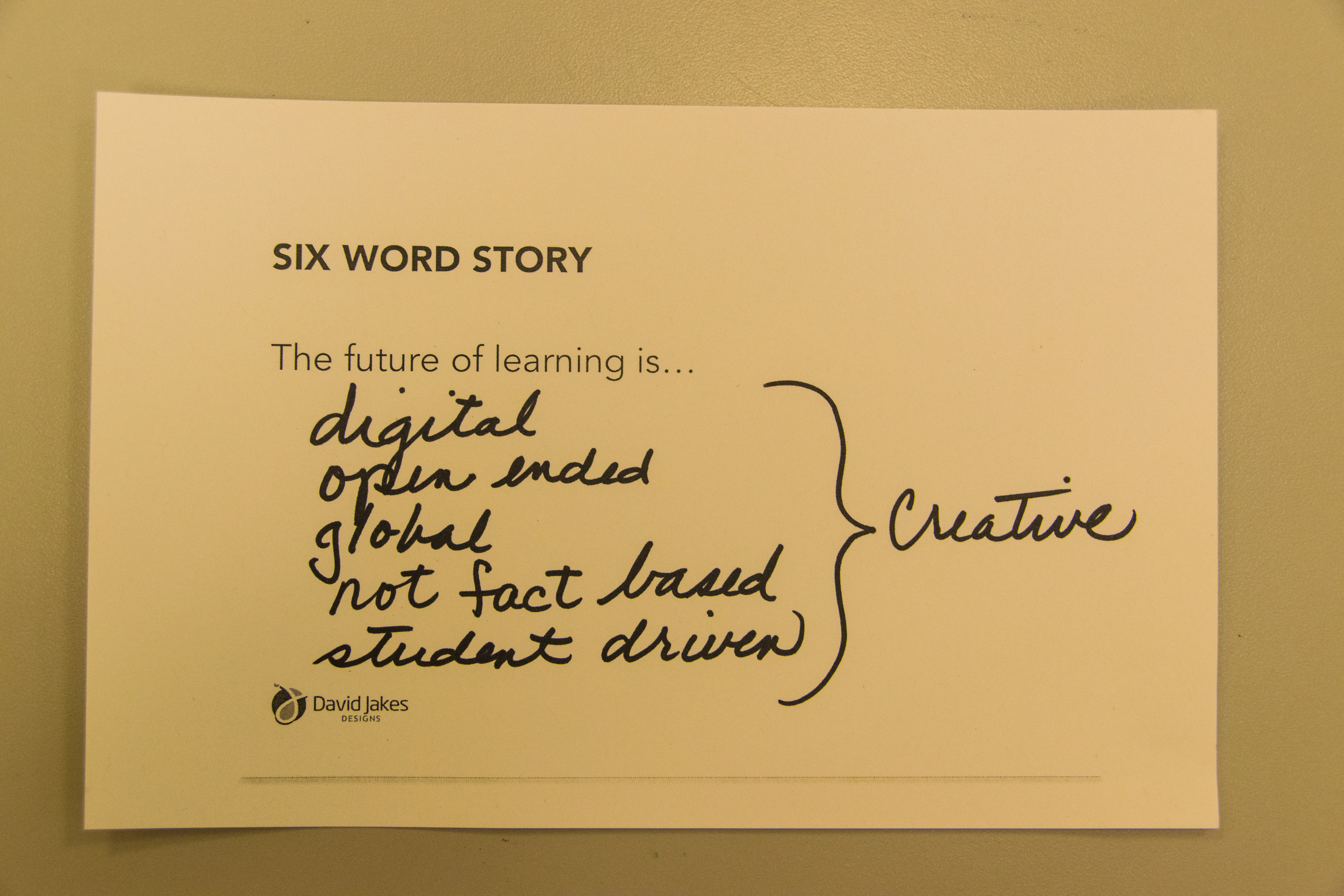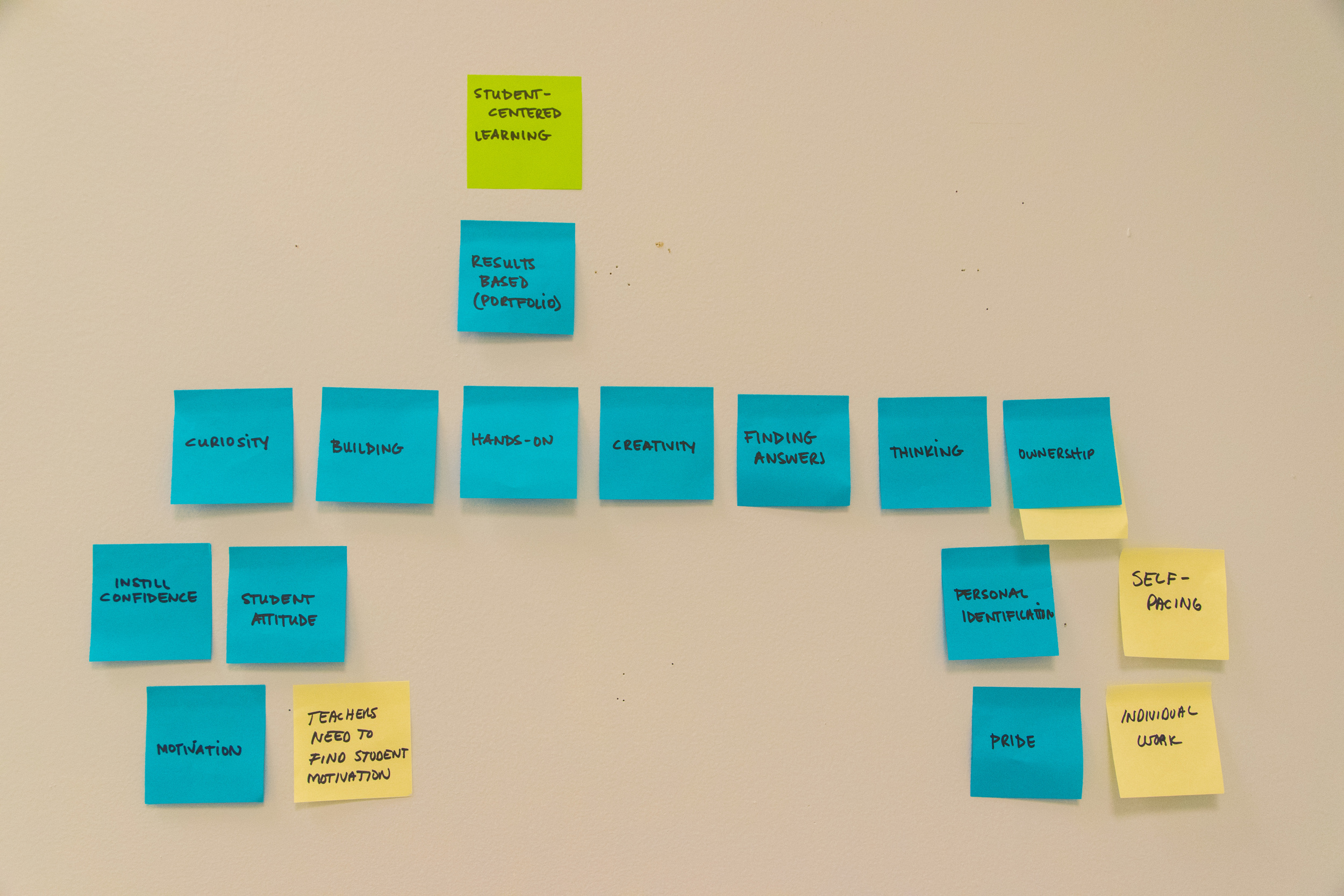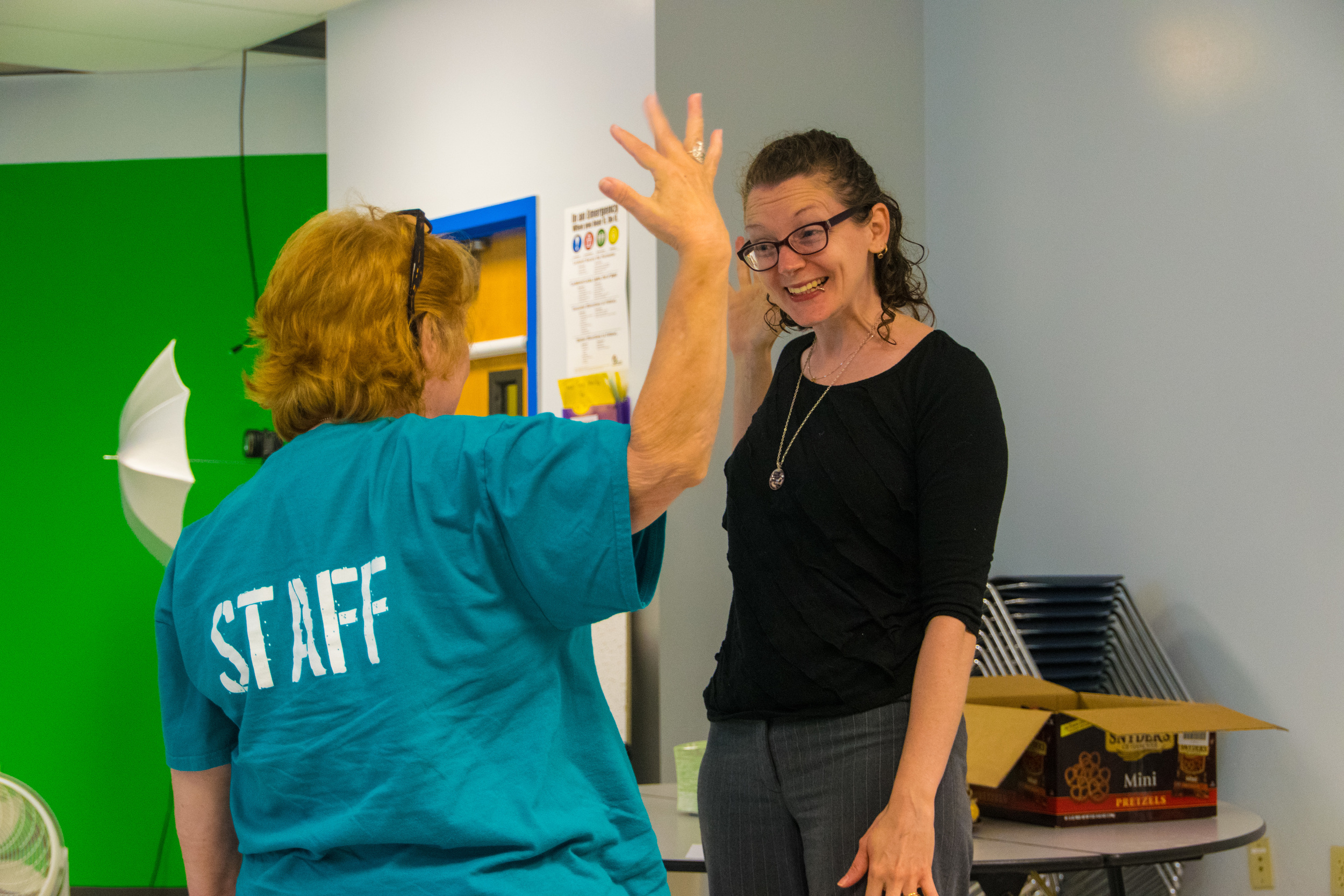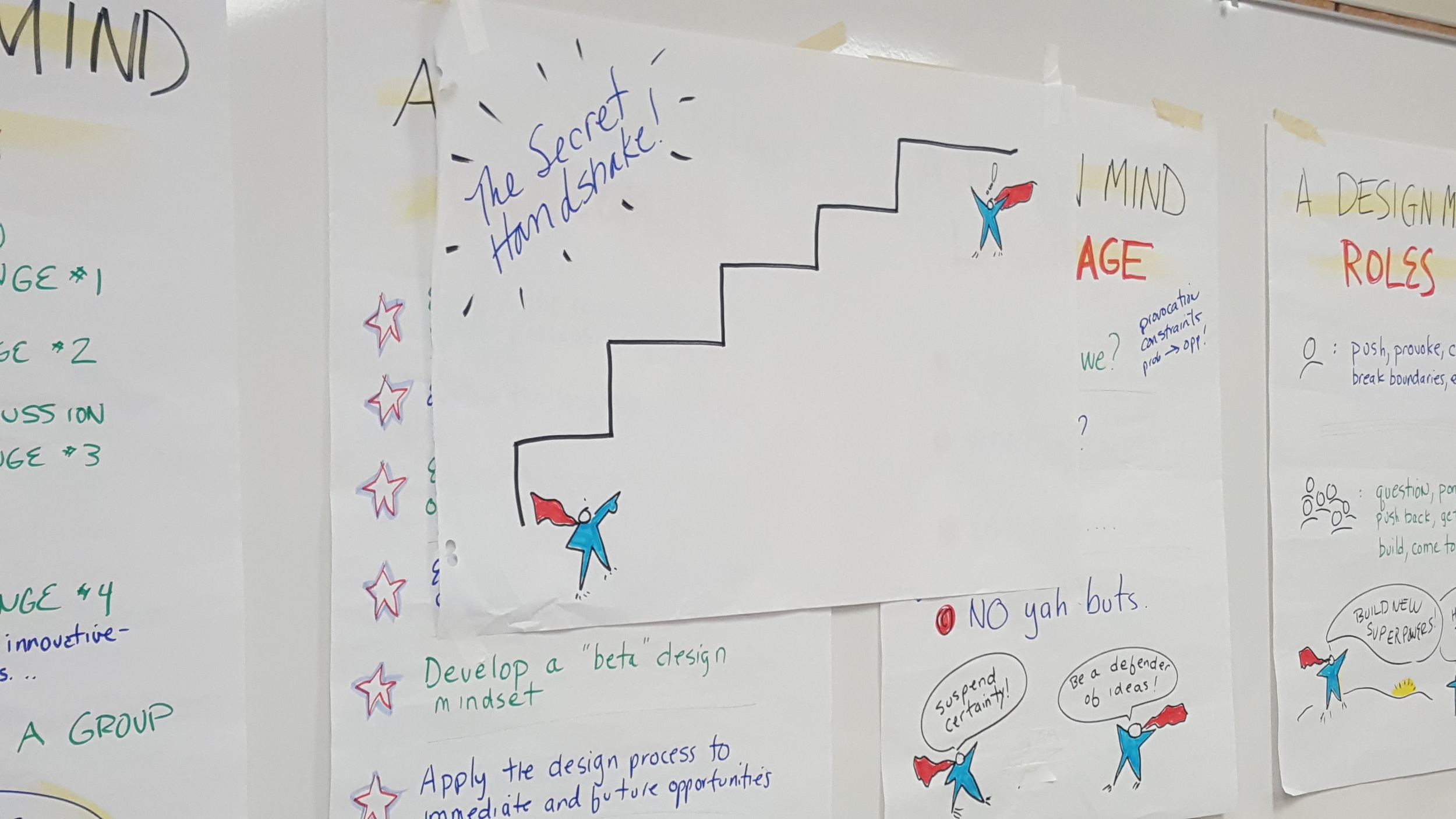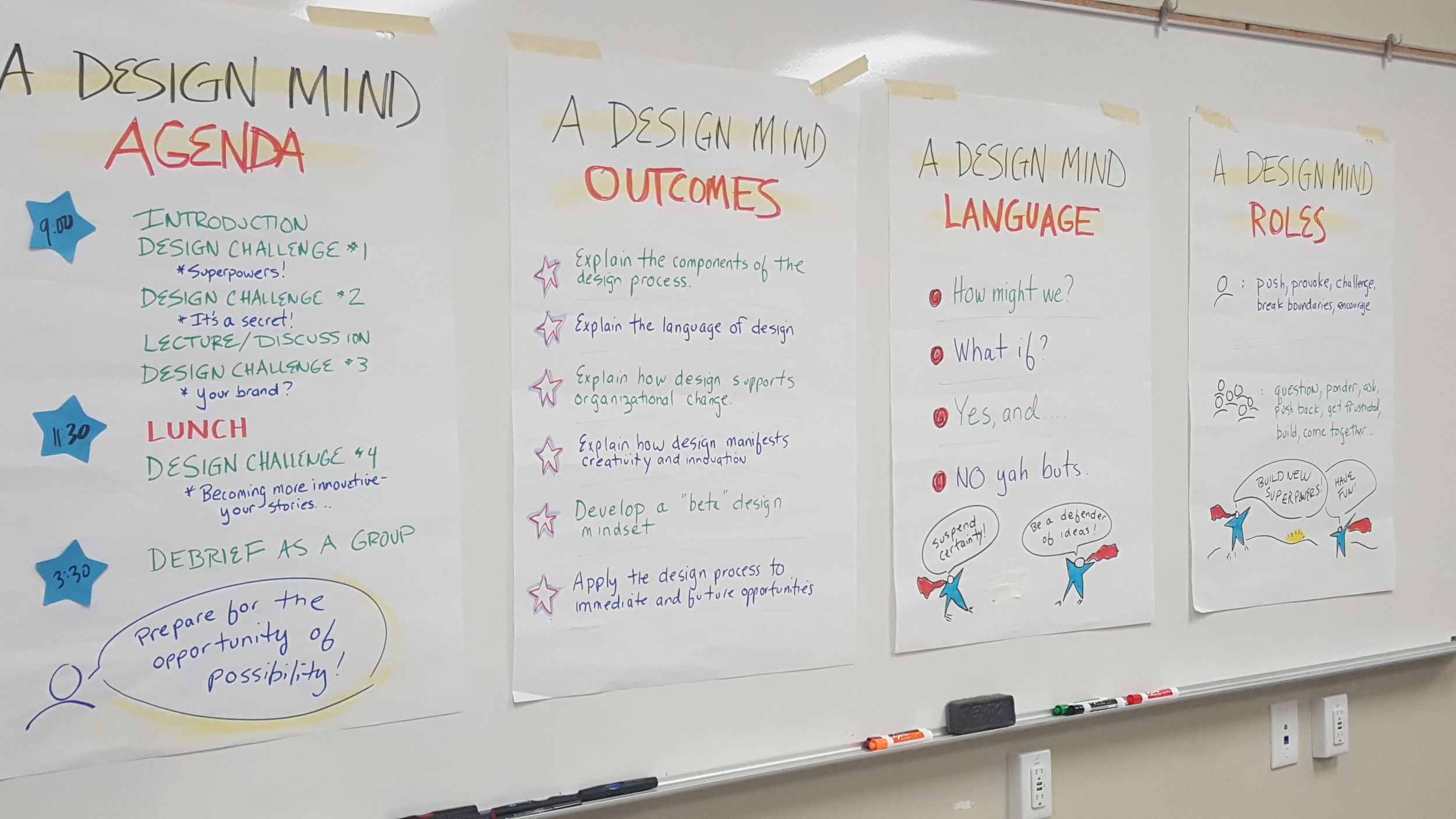The opportunity for organizations to shift their practice, grow, and look into and plan for their future is obviously a challenging task. But at the same time it is tremendous opportunity.
When I became interested in design, I was looking for a way in which the school I worked at could become more innovative and inclusive and shift its learning culture. I was also interested in a process, because organizations love processes, and that's a good thing. Relying on an effective pathway and having a construct for change is good.
Of course, having a process is not enough. For a process to support organizational change, it must be an inclusive process, one that is based in deeply understanding the human condition associated with change. Everyone has to own the change, and be able to see themselves as part of that change. That means involving them in the change process as often as possible.
To that end, and over the past five years, I've employed the process of design to help organizations shift and improve what they do.
The process works like this. Design begins with a provocation or challenge, and the process seeks first to understand the human need associated with the provocation (DISCOVERY), create a set of design drivers (organizational DNA) that reflect that need (DEFINE), allow for ideation and the development of prototype solutions (DEVELOP), the implementation of those prototypes (ENGAGE) and then testing of the prototypes (EVALUATE). This process is iterative (grey arrows in diagram below), and is focused on continual improvement. Over time, and through the iterative improvement cycles, an answer to the provocation can emerge that is implementable at scale and takes the organization to a new place.
I employ this process in the work I do with organizations. My goal is to not only help you design and create a new path, but build the organizational mindset, behaviors and capacity that enable your organization to become self-sufficient and capable of seeing the opportunity in every possibility.
Various stages of the process are captured in the imagery below.
